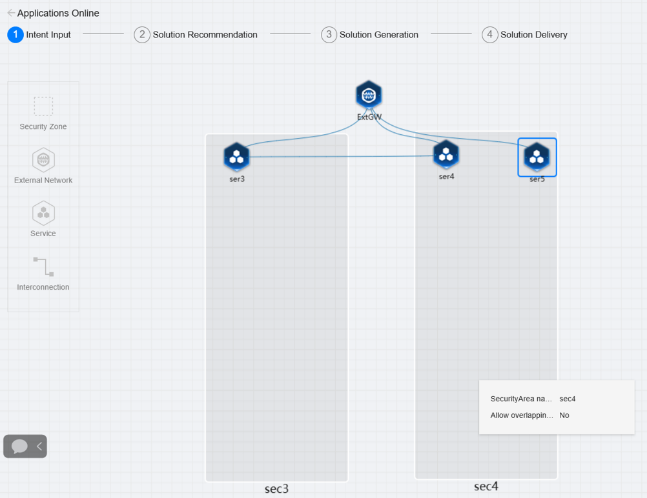2.1- Application Launch Intent Processing
Modern data centers require scalable, agile, and reliable infrastructure to meet the demands of dynamic workloads and increasing service expectations. Minimizing manual operations, ensuring configuration consistency, and accelerating service rollout are critical for operational efficiency. In this context, the test evaluated NCE-Fabric's ability to provision intent-based applications, integrate with virtual machine manager (VMM), and recommend deployment solutions.
We began the test by integrating a VMware vCenter environment as the VMM. As stated by Huawei, NCE-Fabric supports interconnection with platforms such as VMware vCenter and Microsoft System Center, while Nutanix integration is under development. In our case, we used a pre-configured VMware vCenter installation and completed the setup by entering the vCenter URL and credentials in the NCE-Fabric interface.
We then created a new tenant named "EANTC" from scratch, and linked it to the previously provisioned fabric and the VMM instance (vcenter141).
Then we started the applications provisioning using NCE-Fabric's intent-driven approach. For each application, we entered a new intent. Since no templates were available, we followed a customized modeling approach. For the first application (App1), we defined a single security zone connected to the fabric, entered IPv4 and IPv6 address ranges, and then defined a service, which we mapped to the appropriate leaf switches. We did not use VMM integration for App1, so we manually configured the switch ports and assigned VLAN 3001 on leaf1, leaf2, leaf3, and leaf4. The service was associated with a distributed switch (DSwitch) managed by the VMM.
For the second application (App2), we used VMM integration, eliminating the need for manual VLAN and port mapping. NCE-Fabric automatically created a port group in the vCenter cluster. However, NCE-Fabric did not manage virtual machines and their IPs. We still had to bind the VM's network adapters to the correct port group and configure IP addresses manually.
For the third application (App3), we defined two security zones, three services, and their communication relationships. We specified which services were associated with which zones and which zones were allowed to communicate with each other, as shown in Figure 13.

Figure 13: App3 Intent Definition
Once all three applications had been defined, we moved on to configuring inter-application communication. We provided NCE-Fabric with an intent specifying that App1 (Service 1) and App2 (Service 2) were allowed to communicate across their respective security zones. This inter-application communication intent enabled NCE-Fabric to generate deployment options for the required connectivity while preserving isolation for the other services.
This test confirmed that NCE-Fabric meets the Level 4 requirements defined in the ETSI GR ENI 049 document for the Application Launch Intent Management capability.
| < Previous | Next > |
